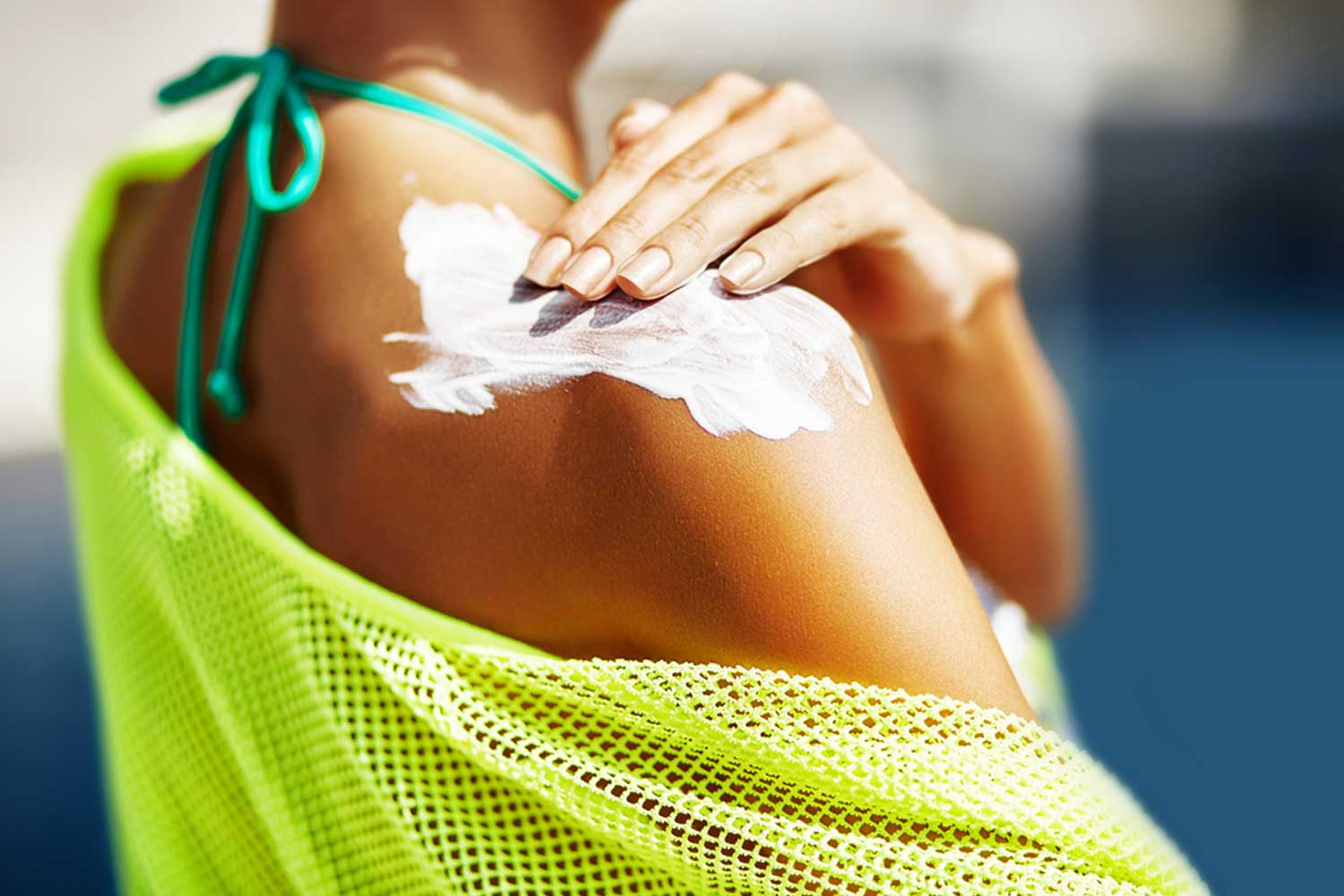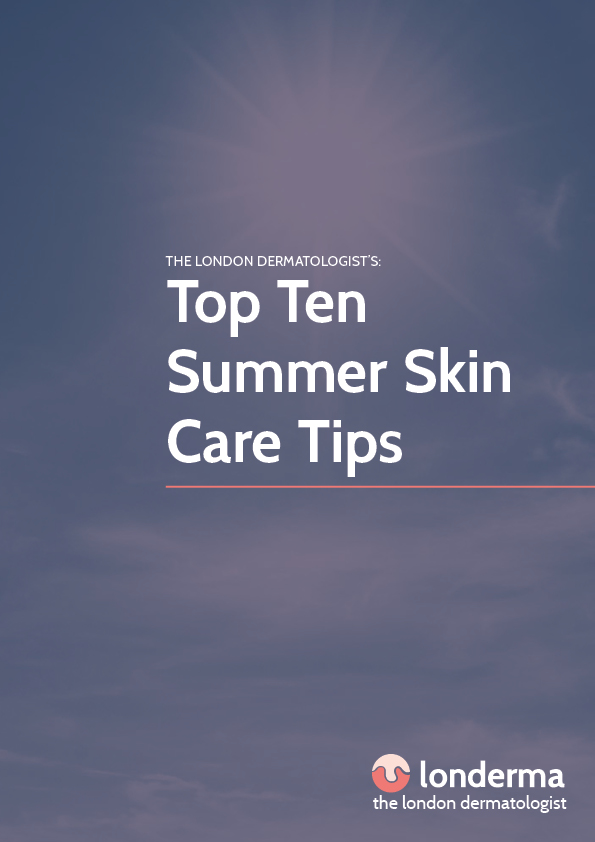Video consultations now available

Using sunblock correctly is one of the most important ways to protect the skin against ultraviolet light—the main cause of sunburn, skin aging, and skin cancer. Skin cancer has increased by about four times in the last 30 years. The main reason for this is because of increased sun exposure particularly short sharp bursts of sun exposure, as tend to occur during sunny holidays. Thirty years ago many families in the UK would holiday at home, whereas now it is much commoner for people to travel abroad several times a year.
When choosing a sunblock it is important to choose one with a high Sun Protection Factor (or SPF). An SPF of at least 30 is desirable. In Europe any sunblock higher than SPF 50 is described as 50+. But remember that SPF only describes the filter against UVB. Ultraviolet light is divided into UVA and UVB. UVA is also a major cause of skin damage. The best way to protect against UVA is to ensure that when you are buying sunblock you choose one that has a broad spectrum protection. It is also worth choosing one that is water resistant if you are likely to swim. Remember that most ultraviolet light comes straight through the clouds so that dangerous levels of exposure can occur on cloudy days in the summer.
My favourite sunblocks at the moment are Altruist (economical, popular with patients, designed by a dermatologist and only available on Amazon), Anthelios (made by La Roche Posay and available in multiple different formulations including gels, creams and oils and with a good UVA blocker), and Sunsense (a popular Australian brand which has multiple formulations including a Sensitive version for those with allergy or sensitivity to sunblocks and also a good children’s sunblock).
The most important consideration with sunblock is to use it! It is very easy in the height of summer to forget to apply sunblock and to end up with sunburn, which is one of the major risk factors for melanoma, the most serious form of skin cancer. Remember that on a cloudy day, 75% of ultraviolet light still comes through clouds meaning it is more than possible to burn when it is cloudy. If you have fair skin, meaning that if you went out on a sunny day without sunblock you would tend to burn before you tan, then you should consider using sunblock whenever you are outside for any significant length of time between April and October between 11am and 3pm. As a dermatologist, I commonly remove skin cancers from nooks and crannies on the face, areas where people often fail to apply sunblock, so when you apply, don’t just rub it into your cheeks, make sure you cover the nose, the corners of the nose and cheeks, underneath the nose, the lips, the eyelids, the ears including the tops of the ears, inside the ears and the back of the ears, the sides and the back of the neck. Watch a video blog in which I demonstrate how to apply sunscreen to the face.
 eBook Download: Top Ten Summer Skin Care Tips
eBook Download: Top Ten Summer Skin Care Tips